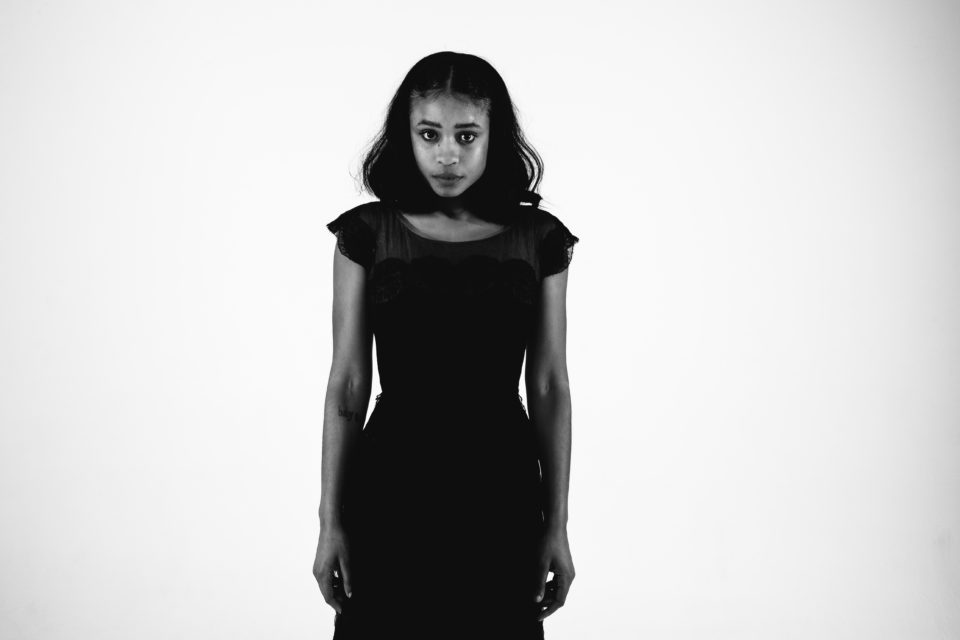Adia Victoria, a thoroughly postmodern blueswoman, was in Paris, a favorite destination of hers and one that’s far away from her South Carolina roots and Nashville home, in late 2019 when the distance inspired a song that would help establish the tone of her third album, A Southern Gothic.
Drawing on a short story collection she’d brought along by southern author Eudora Welty, an ominous, lullaby-like refrain dreamed up by Stone Jack Jones, a West Virginia expat living in Paris, and plenty else she’d witnessed in life and art, Victoria wrote “Oh My My” about the psychic power the South can hold over a person even when they leave the place behind. Its softly murmured lines landed like warnings: “You were born deep in the holler/Even when you leave, it follows.”
“I just wrote the story of this girl who her sister was gone,” Victoria explained during a Zoom interview. “She was removed physically, but her presence remained in the atmosphere of the South; she could see her in the clouds, in the kudzu, in the ground. And I started thinking about what ways we are connected to the landscape in the South. And even in our absence, even in our not belonging, how do we still belong to the South? How do we still belong to each other?”
Since the mid-2010s, Victoria has toured all over the place, singing about her experience of the South. She’d embraced the urge to travel long before that, as soon as she was old enough to leave home and could scrape together enough for a plane ticket. But it wasn’t until the pandemic shrank her world down and limited her musical options that she created her most expansive collection of southern storytelling to date.
Growing up Black and Seventh Day Adventist beneath the Blue Ridge Mountains, Victoria had questions about the claims and control exercised over her life from a very young age.
“I always went too deep into the field of inquiry with authoritative figures around me, because they all seem to be very powerfully afraid,” she observed. “And that was something that I picked up on. So that fear that I sniffed out, it kind of enlivened my nerve as a child.”
She challenged the mandate that she should be good and obedient in order to make it to heaven and avoid hell by doggedly asking why, why, why.
“Because my childhood had been so institutionalized by the church and just by Southern culture, you know, the deep South, South Carolina,” Victoria went on, “I felt that I’d been wound so tight that I had bands about me, and I felt genuinely I felt under surveillance, you know, growing up.”
Victoria slipped away as soon as she could, exploring Paris, where she could practice her French, and New York City. It was when she ventured back South, to Atlanta, that hearing angsty and visceral contemporary music sent her looking for the earthy, existential language of delta blues originators like Skip James.
“When I first heard Skip James in my room in Atlanta when I was 21, I felt like a part of myself had been given back to me,” she said. “I felt like there was a part of my spirit that was talking to me when I heard ‘Hard Time Killing Floor’ for the first time, because he was telling me my story.”
Over time, Victoria figured out how she wanted to tell it herself. When she moved to Nashville—it’s worth noting—she did so not to be close to the music industry but to join family members who’d relocated here. They became her first audience.
Victoria introduced far-flung listeners to her version of the blues with her albums Beyond the Bloodhounds and Silences, a trio of EPs and countless shows. It wasn’t merely a matter of style—she carried on the spirit of the blues with songs that used unsettling imagery to depict being dehumanized, and a sound framed in alternative atmospherics. Her work had potent conceptual underpinnings, and she had a stirringly poetic and righteously resolute way of talking about it that established her as a serious contributor to numerous conversations about region, race and roots music. Her Twitter presence was more lighthearted in its pointedness; she held court with withering irreverence and well-chosen memes.
Victoria found a couple of additional platforms for communication after she went into the lockdown of 2020—a guest editing gig for The Nashville Scene, then her Call & Response podcast—but she otherwise returned to a more insular musical existence at the North Nashville home she shared with her mother and sister. Though Victoria listens broadly these days, making up for the limited musical options permitted by her religious upbringing, she found herself wanting to hear her hard-pressed predecessors. She got especially enthralled with field recordings of men on chain gangs singing together a capella and keeping time with their axe strikes.
“I was listening to how they were able to create with such limited resources,” Victoria recalled. “They had their bodies, they had the chains and they had each other, and that was basically it. I was like, ‘Well, how are you able to create an art form that has endured, that still is relevant, that still informs your descendants to this day with so little?’ And then that’s when I realized, ‘Girl, you are sitting on a landmine. You are sitting here on a patch of grass with your mother that you can plant things and you can put seeds into the ground and watch life grow. You can put your hands in the dirt. You’re free to go walk around barefoot with the grass underneath you.’ And so I started listening to the South in a different way.”
Victoria fixated on the magnolia tree outside her bedroom window that blocked her view of the backyard, but made way for pondering its symbolism. “I started thinking about the relationship that I’ve had with my magnolia or any magnolia, you know. Growing up in Spartanburg, South Carolina, me and my sisters and little girls from the neighborhood, we would gather underneath the magnolia and just play imagination. And we would create entire worlds, just spend whole summer days out there. But on the flip side of that, the magnolia is also this icon of white supremacy and white, Southern myth-making, with mint juleps, magnolia moonlight, all that, you know, nonsense. I was like, ‘How can I reclaim the magnolia for myself and all these Southern, Black girls?'”
Victoria’s quest resulted in the insistent and incantatory song “Magnolia Blues.” She laid the foundation for that and most of the other tracks on what would become A Southern Gothic in the home studio of her musical partner and fiancé, Mason Hickman. They both took up instruments they were unaccustomed to; she patted out rhythms on her body and shook dry beans for percussion, while he, a specialist in textured lead guitar playing, took up a long-unused mandolin, taught himself viola and ordered a banjo. What he lacked in proper technique he made up for with musically astute approximation.
“What was kind of the nice thing about having a home studio, too,” Hickman explained during a separate interview, “was that with these instruments that I’m not familiar with, I could just sit there and hit record on loop and, you know, do 50 takes of something until I until I got something that I like the sound of.”
The original plan was to use those home recordings as demos, and re-cut everything in a big studio with big-name producer T Bone Burnett when they could. But Victoria changed her mind about scrapping their DIY ingenuity and asked Burnett to assist them with mixing and other final touches instead. She said, “When I was working with T Bone, I was like, ‘There’s some very primitive sounds on here and I’m not trying to pretty it up. I need this album to be, the bones to be very visible.'”
Victoria and Hickman still used plenty of eerie, ambient effects, and called on prominent allies from the roots and rock scenes to contribute performances. But leaving the album slightly more stark made it evident that Victoria has relied more heavily on blues forms than ever, and that she’s found in them ample room to tell stories that are by no means limited to the literal. She’s given the songs a spectral and fantastic sense of dread and defiance for a backdrop, and it enlarges the scale of everything — of the claustrophobic interior dialogue with dogma (“Troubled Mind”), the solemnly horrific tale of a preacher’s daughter tortured by polite, southern avoidance (“Whole World Knows”) and the cool and steely expression of indifference toward the expectation that a Black woman perform selfless emotional labor (“Deep Water Blues”).
“One of the main things that the blues gave me,” Victoria reflected, “was peace with the certainty of death, with the certainty of impermanence, with the certainty of uncertainty. And I needed that last year. I needed to be in strong, direct contact with the traditions of the blues, with the lessons of the blues, because I knew that if I tried to be in total control of my art, if I was trying to meet an external demand or expectation, I would lose my mind. I would not be able to maintain my sanity. So I had to let the blues kind of hold me through 2020.”
And with that to steady her, Victoria unfurled tales that vividly depict Black women protagonists defending their selfhood against a South, whether nearby or not, tales that also immerse us in her vast imagination.

